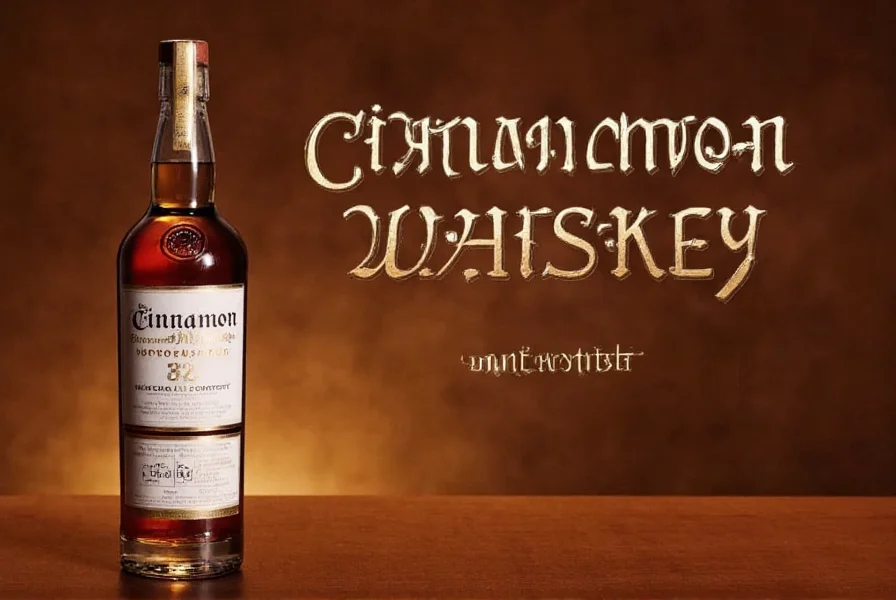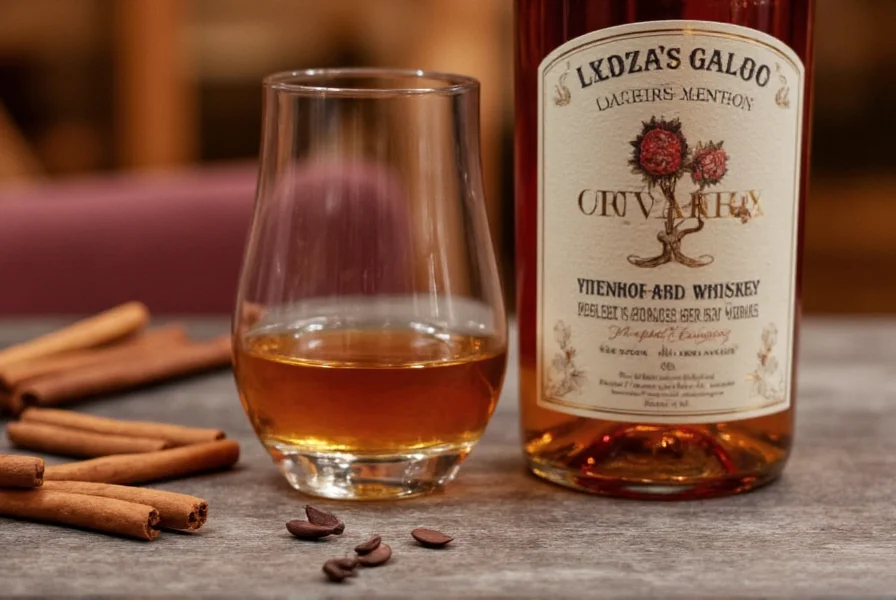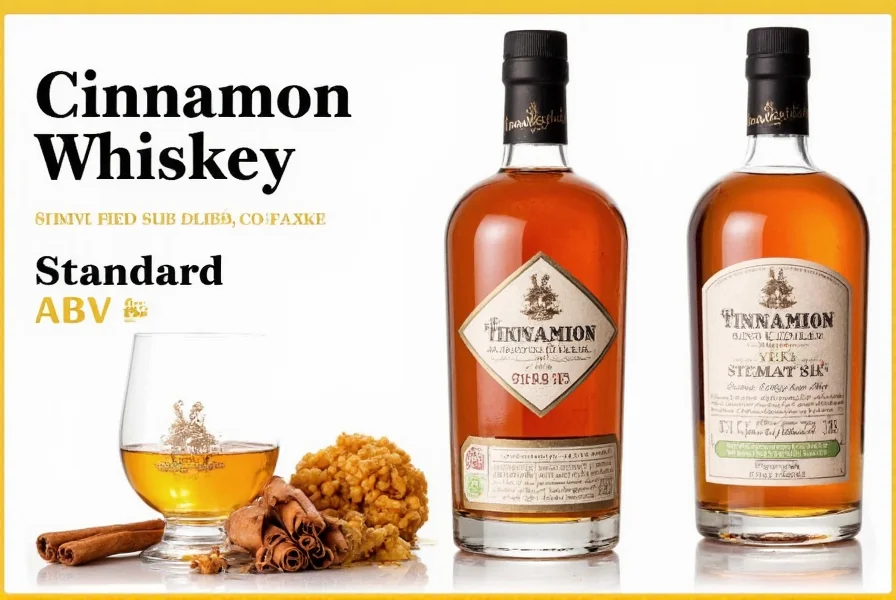Cinnamon whiskey has become increasingly popular for its distinctive spicy-sweet flavor profile that makes it versatile for both sipping and mixing in cocktails. Understanding its alcohol content is essential for responsible consumption, recipe formulation, and making informed purchasing decisions. Unlike some misconceptions, the addition of cinnamon flavoring doesn't significantly alter the base alcohol content compared to traditional whiskeys.
Understanding Cinnamon Whiskey Composition
Cinnamon whiskey is typically made by infusing aged whiskey with natural cinnamon flavors and sweeteners. The base spirit remains fundamentally the same as regular whiskey, with the primary differences being the added flavor components and slightly higher sugar content. This infusion process doesn't substantially change the alcohol concentration, which is carefully regulated during production.
The standard alcohol by volume (ABV) for most cinnamon whiskey brands falls within a narrow range. This consistency exists because producers aim to maintain familiar drinking characteristics while introducing the distinctive cinnamon flavor. The alcohol content directly affects both the sensory experience and how the spirit interacts with other ingredients in cocktails.
Typical Alcohol Content Range Explained
While 35% ABV (70 proof) represents the industry standard for cinnamon whiskey, it's important to understand the regulatory and practical reasons behind this consistency:
| Measurement Type | Standard Range | Common Examples |
|---|---|---|
| Alcohol by Volume (ABV) | 33.3%–35% | Fireball: 33.3%, Wild Turkey American Honey: 35% |
| Proof | 66.6–70 | Most cinnamon whiskeys: 70 proof |
| Comparison to Regular Whiskey | Slightly lower than standard | Bourbon standard: 40% ABV (80 proof) |
The slightly lower alcohol content compared to traditional bourbons and whiskeys (which typically run 40% ABV or 80 proof) serves multiple purposes. It creates a smoother drinking experience that better accommodates the sweet cinnamon flavor profile and makes the spirit more approachable for those who find standard whiskeys too strong.
Brand-Specific Alcohol Content Variations
While most cinnamon whiskeys adhere to the standard range, certain premium or craft brands may deviate slightly. These variations usually reflect specific production choices rather than fundamental differences in the product category:
- Fireball Cinnamon Whisky: 33.3% ABV (66.6 proof) - the market leader with consistent formulation
- Wild Turkey American Honey (includes cinnamon notes): 35% ABV (70 proof)
- Jack Daniel's Tennessee Fire: 35% ABV (70 proof)
- Craft distillery variations: May range from 30%–40% ABV depending on the producer's vision
When comparing cinnamon whiskey alcohol content across brands, always check the label as formulations can change. The Alcohol and Tobacco Tax and Trade Bureau (TTB) requires precise labeling of alcohol content, making this information readily available on every bottle.

Factors Influencing Cinnamon Whiskey Alcohol Content
Several production factors determine the final alcohol content in cinnamon whiskey:
- Base whiskey selection - Producers typically start with a standard whiskey (usually 40% ABV) then adjust during flavoring
- Dilution during flavor infusion - Adding cinnamon extracts and sweeteners often requires slight dilution
- Regulatory requirements - Must meet TTB standards for whiskey-based products
- Market positioning - Lower alcohol content appeals to a broader audience seeking approachable spirits
The flavoring process itself doesn't increase alcohol content. Instead, manufacturers carefully balance the cinnamon flavor intensity with the appropriate alcohol level to create a harmonious product. This balancing act explains why most commercial products cluster around the 35% ABV mark.
How Alcohol Content Affects Taste and Experience
The specific alcohol content in cinnamon whiskey significantly influences both the sensory experience and practical usage:
At 35% ABV, cinnamon whiskey achieves an optimal balance where the alcohol warmth complements rather than overwhelms the cinnamon spice. Higher alcohol content would intensify the burning sensation, potentially masking the nuanced cinnamon flavors. Lower alcohol content might result in a flatter flavor profile with less complexity.
This alcohol level also affects how cinnamon whiskey performs in mixed drinks. The moderate strength allows it to blend well with other ingredients without dominating the cocktail. For shooters and neat consumption, the slightly reduced alcohol content compared to standard whiskey makes it more accessible to those who find traditional whiskeys too intense.
Regulatory Standards for Cinnamon Whiskey
In the United States, cinnamon whiskey must comply with Alcohol and Tobacco Tax and Trade Bureau (TTB) regulations. These standards ensure consistent labeling and production practices:
- Must be derived from distilled grain spirits meeting whiskey production standards
- Alcohol content must be accurately represented on labeling
- Flavoring ingredients must be food-grade and safely processed
- Products labeled as “whiskey” must meet minimum aging requirements
These regulations help maintain consistency across brands, which explains why most commercial cinnamon whiskeys cluster around the 35% ABV standard. The TTB requires precise alcohol content disclosure, making it easy for consumers to verify the strength of any product they purchase.

Practical Implications for Consumers
Understanding cinnamon whiskey alcohol content has several practical implications for consumers:
When mixing cocktails, knowing the precise ABV helps maintain proper drink balance. A 35% ABV cinnamon whiskey will behave differently in recipes than standard 40% ABV whiskeys. For responsible consumption, the slightly lower alcohol content means cinnamon whiskey has marginally fewer alcohol units per serving compared to traditional whiskeys, though the sweet flavor profile can make it easier to consume in larger quantities without noticing the effects.
Cocktail enthusiasts should note that the standard 1.5-ounce shot of cinnamon whiskey contains approximately 0.525 ounces of pure alcohol, compared to 0.6 ounces in a standard whiskey shot. This difference, while small, can affect both the potency and flavor balance of mixed drinks.
Conclusion
Cinnamon whiskey maintains a consistent alcohol content standard of approximately 35% ABV (70 proof), with most commercial products ranging between 33.3%–35% ABV. This slightly lower alcohol concentration compared to traditional whiskeys creates a more approachable drinking experience that complements the distinctive cinnamon flavor profile. Understanding these alcohol content specifics helps consumers make informed choices about purchasing, consumption, and cocktail formulation while enjoying this popular flavored spirit responsibly.
Frequently Asked Questions
What is the typical proof of cinnamon whiskey?
Most cinnamon whiskey products are bottled at 70 proof (35% alcohol by volume), though some popular brands like Fireball Cinnamon Whisky use 66.6 proof (33.3% ABV). This slightly lower proof than standard whiskey (typically 80 proof) creates a smoother drinking experience that better accommodates the sweet cinnamon flavor profile.
Does cinnamon whiskey have more alcohol than regular whiskey?
No, cinnamon whiskey typically has slightly less alcohol than regular whiskey. Standard bourbon and whiskey are usually 40% ABV (80 proof), while most cinnamon whiskeys range from 33.3%–35% ABV (66.6–70 proof). The lower alcohol content helps balance the sweet cinnamon flavor and creates a more approachable spirit for many consumers.
How does alcohol content affect cinnamon whiskey's flavor?
The 35% ABV standard for cinnamon whiskey creates an optimal balance where the alcohol warmth complements rather than overwhelms the cinnamon spice. Higher alcohol content would intensify the burning sensation and potentially mask the nuanced cinnamon flavors, while lower alcohol content might result in a flatter flavor profile with less complexity and warmth.
Can I find cinnamon whiskey with higher alcohol content?
While most commercial cinnamon whiskeys adhere to the 33.3%–35% ABV range, some craft distilleries produce higher-proof versions. These specialty products might reach 40% ABV or higher, but they represent a small minority of available options. Always check the label for precise alcohol content, as formulations can vary between brands and even between product batches.
How does cinnamon whiskey alcohol content affect cocktail recipes?
The slightly lower alcohol content (35% ABV vs. standard whiskey's 40% ABV) means cinnamon whiskey will behave differently in cocktail recipes. A standard 1.5-ounce shot contains approximately 0.525 ounces of pure alcohol compared to 0.6 ounces in regular whiskey. This difference affects both the potency and flavor balance of mixed drinks, so recipes specifically designed for cinnamon whiskey often adjust other ingredients to maintain proper balance.











 浙公网安备
33010002000092号
浙公网安备
33010002000092号 浙B2-20120091-4
浙B2-20120091-4